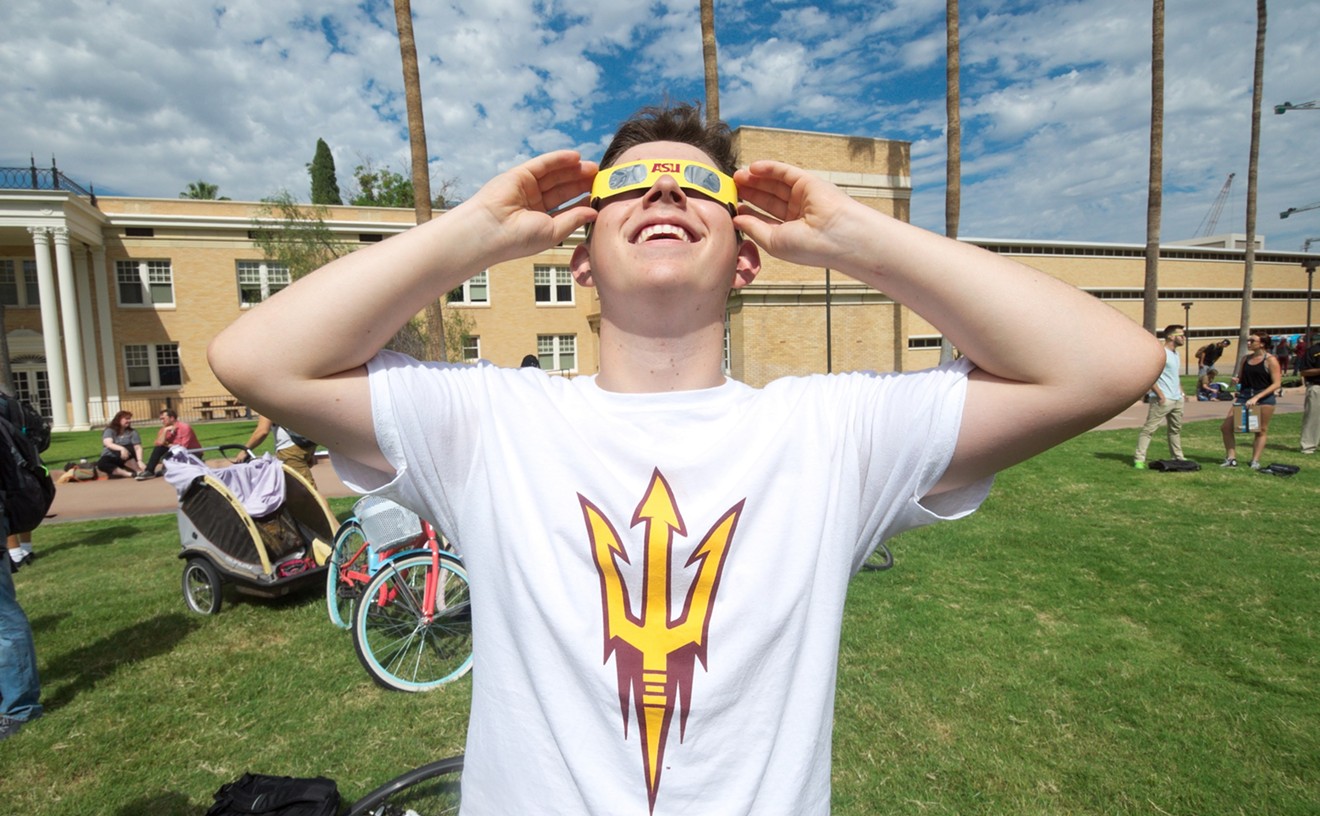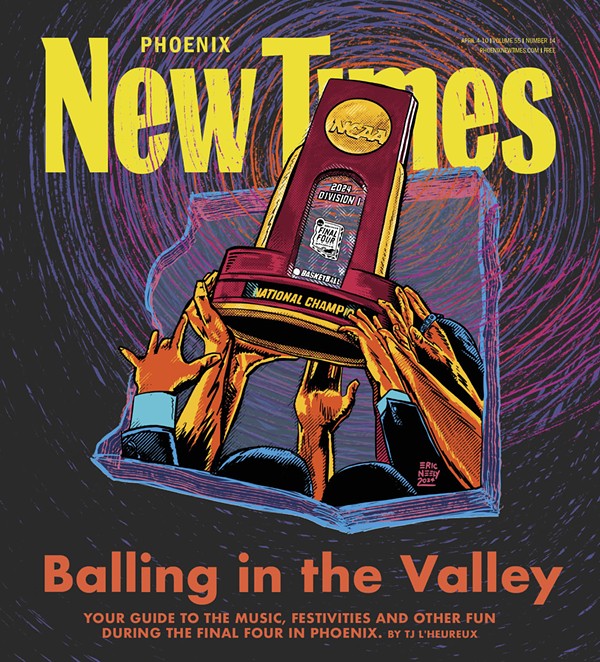When I moved to Phoenix two months ago, I looked forward to a lot of things: dry heat, Mexican cuisine, and bicycling around town – but mostly the bicycling. Coming from the northeast, I had never lived in a flat city, much less a flat city with year-round sun and a countywide network of bike lanes. I hit the streets so fast, I nearly forgot to inflate my tires.
One of the Valley’s most luxurious routes is the Arizona Canal Trail, a multi-use path that stretches from Scottsdale to Peoria. True to its name, the trail follows the Arizona Canal, a wide waterway that cuts through suburbs, parks, and commercial districts.
On a recent weekday, I finally made time to bike a 15-mile segment of the trail and see what it was all about. The afternoon was scorching (about 110 degrees), but after years of riding Pittsburgh’s breakneck hills in freezing rain, a warm day on the canal was a breeze.
For wheelsfolk taking on the Arizona Canal Trail, here were some tidbits I picked up on my excursion.
You Kind of Have to Plan
If there’s one thing I hate, it’s riding 10 miles in one direction only to turn around and bike the same 10 miles back. But unless you have a designated driver, who can drop you off at one point and pick you up somewhere else, this is exactly the trip you have to take. I live in downtown Phoenix, and I spent several hours figuring out how to avoid driving at all. After much triangulation, I decided to take the Light Rail up Central Avenue to Camelback Road, then bike the remaining four miles north. The route is straight and easy, and by the time I found the canal, I had worked up a decent sweat.
But there was still the question of getting back. My goal was to ride the canal to Scottsdale, then bike an additional seven miles down to the Salt River. Luckily, there’s a second multi-use trail (the Indian Bend Wash Greenbelt) that goes the entire way. From there, I could pick up the eastbound Light Rail back downtown.
All told: 26 miles. Just right.
It’s Very Long
According to the Rails-to-Trails Conservancy, the Arizona Canal Trail is 35.9 miles long. To give you some perspective, this is the equivalent biking the entire perimeter of Washington, D.C. Put another way, this is like pedaling the entire length of Aruba… and then pedaling another 13 miles into the ocean. Keep in mind that there are serious cyclists in Phoenix who bike incredible distances in high summer without a second thought. But for normal people, 35.9 miles of level, car-free riding is a pretty great thing in any city.
The Engineering is Impressive
Building a trail may not seem very complicated, but then again, the pyramids may look like just a pile of rocks. The “trail” is actually two separate paths, one on either side of the canal. The route is full of bridges and tunnels, and riders may find themselves dipping under major highways and crossing the water on tiny trestles. Special signs help guide cyclists and direct traffic. From the moment you start riding, it’s clear that a lot of thought was put into the canal trail.
The Terrain is Varied
Most of the trail is hard, dusty, and yellow. When you see a picture of the Arizona Canal Trail, this kind of “packed earth” is usually what you see. But the terrain is much more diverse: Some parts are paved in smooth asphalt, others are rocky and rough, and some look like single-track trails for mountain bikers. In downtown Scottsdale, the trail blends into the urban design, and lanes are painted on the dark tarmac. In other places, the trail is so vague and confusing that you may think you’ve lost your way. But keep going – the path picks up eventually.
Watch the Intersections
There you are, coasting along, happy as can be, and then you hit a street. The trail stops abruptly in front of four perpendicular lanes of fast-moving traffic. Across the street you see that the trail resumes, but there’s no crosswalk, no signage, no flashing yellow light. You look right: 200 feet down, there’s an intersection with a traffic light. You look left: 300 feet up, there’s another intersection with a stop sign. Which way do you go?
If you’re me, you just wait for a break in traffic and book it directly across the street. Please understand: I don’t recommend this. Darting across a busy avenue is not “safe,” by any measure. But if the trail has one weakness, it’s the constant stopping for cross-streets. In some neighborhoods, a cyclist has to brake for traffic every quarter-mile or so. It ruins the momentum and can take long minutes to span an motorway safely. For semi-patient riders like me, the wasted time is maddening.
You Won’t Make a Lot of Friends
Most Phoenicians are not foolish enough to venture outside during heat waves, so I didn’t see a lot of people on the trail. Some skateboarders rolled by, along with scattered cyclists. Most of the people I saw were scruffy men with fishing poles. They perched by the side of the trail with tackle boxes and glinting bottles of water, and they cast their reels into the brown river.
No one said a word. Few passersby even nodded. So unless you bring a buddy (which is generally a good idea), the canal trail is a place for exercise, solitude, and quiet reflection. I’ve biked similar trails all over the country, and I love them largely for their remote tranquility. If John Muir had been surrounded by housing developments and box stores, he’d probably have felt something like this.
The trail has its share of oddballs, too. At one point, I passed a wrinkly man on a rusty old bike; his ride was designed to look like an old chopper, which meant the gear system was low and hard to pump. I overtook him easily, which apparently pissed him off. He stood up on his pedals and flew past me, glaring with venomous eyes. He made a throaty sound, like a I pulled to the side and let him go ahead. I’m not competitive, and the last thing I needed was to provoke a guy with schizophrenia in the middle of nowhere.
Bring Your Own Water
Obviously. Also, I didn’t see a single public restroom. They probably exist somewhere, but don’t expect to find one.
Sunscreen, too, is a must. For most of the way, you won’t find shade to save your life.
It Offers a Whole New Perspective
Many years ago, I took a kayak into the Monongahela River for the first time and paddled a few miles through Pittsburgh. When friends asked me what I thought, I exclaimed, “It’s like a whole different city!”
The same goes for the Arizona Canal Trail: You’ll see empty lots, abandoned machinery, loading docks, highway underbellies, and the backyards of subdivisions. The canal itself is a beautiful sight, especially when Camelback Mountain is reflected in its glassy surface, or a gaggle of ducks waddles along the dusty banks.
Viewed from a car, the Arizona Canal doesn’t look like much. You might register its existence through the driver’s side window as you glide over a bridge. But biking the trail is a chance to commune with the canal – all day, if you feel so inclined.
Just About Anybody Can Do It
If you’re an avid athlete, the Valley of the Sun is full of backbreaking challenges, like ascending South Mountain at noon or doing a single-push ride from Phoenix to Tucson.
The Arizona Canal Trail is nothing like that. You don’t have to wake up at 5 a.m., you don’t need special tires, and you barely have to switch gears. There’s no admission, and even the scattered parking lots are free. No matter the weather or time of year, the trail is always open – and there’s a lot of it to see.
Next time, I hope to ride the whole thing.
Assuming I can find a driver.
[
{
"name": "Air - MediumRectangle - Inline Content - Mobile Display Size",
"component": "18478561",
"insertPoint": "2",
"requiredCountToDisplay": "2"
},{
"name": "Editor Picks",
"component": "16759093",
"insertPoint": "4",
"requiredCountToDisplay": "1"
},{
"name": "Inline Links",
"component": "17980324",
"insertPoint": "8th",
"startingPoint": 8,
"requiredCountToDisplay": "7",
"maxInsertions": 25
},{
"name": "Air - MediumRectangle - Combo - Inline Content",
"component": "16759092",
"insertPoint": "8th",
"startingPoint": 8,
"requiredCountToDisplay": "7",
"maxInsertions": 25
},{
"name": "Inline Links",
"component": "17980324",
"insertPoint": "8th",
"startingPoint": 12,
"requiredCountToDisplay": "11",
"maxInsertions": 24
},{
"name": "Air - Leaderboard Tower - Combo - Inline Content",
"component": "16759094",
"insertPoint": "8th",
"startingPoint": 12,
"requiredCountToDisplay": "11",
"maxInsertions": 24
}
]










